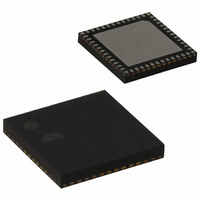EM357-RTR Ember, EM357-RTR Datasheet - Page 143

EM357-RTR
Manufacturer Part Number
EM357-RTR
Description
IC RF TXRX ZIGBEE 192KB 48QFN
Manufacturer
Ember
Specifications of EM357-RTR
Frequency
2.4GHz
Data Rate - Maximum
250kbps
Modulation Or Protocol
802.15.4 Zigbee
Applications
General Purpose
Power - Output
5dBm
Sensitivity
-100dBm
Voltage - Supply
2.1 V ~ 3.6 V
Current - Receiving
26mA
Current - Transmitting
31mA
Data Interface
PCB, Surface Mount
Memory Size
192kB Flash, 12kB RAM
Antenna Connector
PCB, Surface Mount
Operating Temperature
-40°C ~ 85°C
Package / Case
48-QFN
Lead Free Status / RoHS Status
Lead free / RoHS Compliant
Other names
636-1011-2
Available stocks
Company
Part Number
Manufacturer
Quantity
Price
Company:
Part Number:
EM357-RTR
Manufacturer:
SILICON
Quantity:
3 000
Part Number:
EM357-RTR
Manufacturer:
SILICON
Quantity:
20 000
Hints on using center-aligned mode:
9.3.10 One-Pulse Mode
One-pulse mode (OPM) is a special case of the previous modes. It allows the counter to be started in response
to a stimulus and to generate a pulse with a programmable length after a programmable delay.
Starting the counter can be controlled through the slave mode controller. Generating the waveform can be
done in output compare mode or PWM mode. Select OPM by setting the TIM_OPM bit in the TIMx_CR1 register.
This makes the counter stop automatically at the next UEV.
A pulse can be correctly generated only if the compare value is different from the counter initial value.
Before starting (when the timer is waiting for the trigger), the configuration must be:
In up-counting: TIMx_CNT < TIMx_CCRy ≤ TIMx_ARR (in particular, 0 < TIMx_CCRy),
In down-counting: TIMx_CNT > TIMx_CCRy.
For example, to generate a positive pulse on OC1 with a length of t
rising edge is detected on the TI2 input pin, using TI2FP2 as trigger 1:
In the example, the TIM_DIR and TIM_CMS bits in the TIMx_CR1 register should be low.
Since only one pulse is desired, software should set the TIM_OPM bit in the TIMx_CR1 register to stop the
counter at the next UEV (when the counter rolls over from the auto-reload value back to 0).
When starting in center-aligned mode, the current up-down configuration is used. This means that the
counter counts up or down depending on the value written in the TIM_DIR bit in the TIMx_CR1 register. The
TIM_DIR and TIM_CMS bits must not be changed at the same time by the software.
Writing to the counter while running in center-aligned mode is not recommended as it can lead to
unexpected results. In particular:
The safest way to use center-aligned mode is to generate an update by software (setting the TIM_UG bit in
the TIMx_EGR register) just before starting the counter, and not to write the counter while it is running.
Map TI2FP2 on TI2: Write TIM_IC2S = 01 in the TIMx_CCMR1 register.
TI2FP2 must detect a rising edge. Write TIM_CC2P = 0 in the TIMx_CCER register.
Configure TI2FP2 as trigger for the slave mode controller (TRGI): Write TIM_TS = 110 in the TIMx_SMCR
register.
Use TI2FP2 to start the counter: Write TIM_SMS to 110 in the TIMx_SMCR register (trigger mode).
The OPM waveform is defined: Write the compare registers, taking into account the clock frequency and
the counter prescaler.
To build a waveform with a transition from 0 to 1 when a compare match occurs and a transition from 1 to
0 when the counter reaches the auto-reload value:
•
•
•
•
•
•
The direction is not updated when the value written to the counter that is greater than the auto-
reload value (TIMx_CNT > TIMx_ARR). For example, if the counter was counting up, it continues to
count up.
The direction is updated when 0 or the TIMx_ARR value is written to the counter, but no UEV is
generated.
The t
The t
(TIMx_ARR - TIMx_CCR1).
Enable PWM mode 2: Write TIM_OC1M = 111 in the TIMx_CCMR1 register.
Optionally, enable the buffer registers: Write TIM_OC1BE = 1 in the TIMx_CCMR1 register and
TIM_ARBE in the TIMx_CR1 register. In this case, also write the compare value in the TIMx_CCR1
register, the auto-reload value in the TIMx_ARR register, generate an update by setting the TIM_UG
bit, and wait for external trigger event on TI2. TIM_CC1P is written to 0 in this example.
DELAY
PULSE
is defined by the difference between the auto-reload value and the compare value
is defined by the value written in the TIMx_CCR1 register.
Final
9-19
PULSE
and after a delay of t
DELAY
120-035X-000G
as soon as a



















